Stay Sun-Safe: A Comprehensive Guide to the 10 Rules of Sunscreen
We all know that sunscreen is an essential part of any skincare routine, but are you using it correctly? Sunscreen is not just about slathering on some cream before heading out in the sun. It's about choosing the right product and applying it correctly to ensure maximum protection against harmful UV rays. In this blog post, we will discuss the 10 rules of sunscreen that you should follow to stay safe in the sun.
Rule 1: Choose Non-Nano Zinc Sunscreen
The first rule of sunscreen is to choose a non-nano zinc sunscreen. This is the best form of sunscreen as it provides broad-spectrum protection against UVA and UVB rays. Non-nano zinc sunscreens work by sitting on top of the skin and reflecting the sun's rays, unlike chemical sunscreens that absorb into the skin.
Is Mineral Sunscreen Truly Better than Chemical Sunscreen? Why?
Chemical sunscreens work by absorbing UV rays and converting them into heat. They contain ingredients such as oxybenzone, avobenzone, octinoxate, and homosalate, among others. These ingredients have been known to cause skin irritation, allergic reactions, and endocrine disruption in some people. They also require stabilizers and additional preservatives to maintain their effectiveness, which can further irritate the skin and lead to potential health concerns.
Moreover, studies have shown that some of the chemicals in chemical sunscreens can degrade quickly when exposed to sunlight, leading to a loss of effectiveness. One study found that some of the ingredients in chemical sunscreens can break down within minutes of exposure to sunlight, and as a result, may not provide adequate protection against harmful UV rays [1]. Additionally, some studies have raised concerns about the potential link between certain chemicals found in chemical sunscreens and cancer [2].
On the other hand, non-nano zinc oxide is a mineral sunscreen that sits on top of the skin and reflects the sun's rays. It works by creating a physical barrier that prevents the sun's rays from penetrating the skin. Non-nano zinc oxide does not require stabilizers or preservatives, making it a more natural option that is less likely to cause skin irritation or health concerns.
Research has also shown that non-nano zinc oxide is effective in providing broad-spectrum protection against both UVA and UVB rays [3]. Furthermore, it has been found to be safe and non-toxic, making it an ideal choice for individuals with sensitive skin [4].
Rule 2: Look for Broad Spectrum Protection
UV rays are classified into two types: UVA and UVB. Both types of rays can cause skin damage and increase the risk of skin cancer, but they affect the skin differently.
UVB rays primarily affect the outer layer of the skin and are responsible for causing sunburns. They are the most common cause of skin cancer, including basal cell carcinoma, squamous cell carcinoma, and melanoma. UVA rays, on the other hand, penetrate deeper into the skin and can cause premature aging, wrinkles, and age spots. UVA rays can also contribute to the development of skin cancer [5, 6].
To provide effective protection against both UVA and UVB rays, it's important to choose a sunscreen that offers broad-spectrum protection. This means that the sunscreen contains ingredients that can filter out both types of UV rays.
Sunscreen filters work by absorbing, reflecting, or scattering UV radiation. Some filters are more effective against UVA rays, while others are more effective against UVB rays. For example, avobenzone and Mexoryl SX are UVA filters, while octinoxate and homosalate are UVB filters. Zinc oxide and titanium dioxide are broad-spectrum filters that provide protection against both UVA and UVB rays [7].
That's another reason Mineral sunscreen is superior. It doesn't need a blend of filters to be effective.
Rule 3: Use 1-Quarter Teaspoon or Two Finger Lengths
The amount of sunscreen you use is just as important as the type of sunscreen you use. To ensure that you're getting adequate protection, it's recommended that you use at least 1/4 teaspoon of sunscreen for your face and neck and at least 1 ounce (or a shot glass full) of sunscreen for your body. However, many people don't use enough sunscreen, which can result in inadequate protection against the sun's harmful rays.
Research has shown that using less sunscreen than recommended can significantly decrease the level of protection against UV radiation. For example, one study found that using only 25% of the recommended amount of sunscreen led to a 40% reduction in protection against UV radiation [8].
To make sure you're using the right amount of sunscreen, you can use the "1-quarter teaspoon or two finger lengths" rule. This means that you should apply at least 1/4 teaspoon of sunscreen to your face and neck and enough to cover the length of two fingers to each area of your body. By following this guideline, you can ensure that you're using enough sunscreen to provide adequate protection against the sun's harmful rays [9].
Rule 4: Don't Mix Sunscreen with Moisturizer or Foundation
When you mix sunscreen with other products, you can dilute the sunscreen and reduce its effectiveness, which can increase your risk of sun damage and skin cancer.
One study found that when sunscreen was mixed with moisturizer or foundation, the amount of protection provided by the sunscreen was reduced by up to 75% [10]. This is because other products can interfere with the way the sunscreen is absorbed into the skin and can also affect the way the sunscreen interacts with UV radiation.
It's important to note that some moisturizers and foundations do contain sunscreen, but these products are formulated to be used as standalone sunscreens and should not be mixed with other products. If you want to use both sunscreen and moisturizer or foundation, it's best to apply them separately, with sunscreen being applied as the last step in your skincare routine before makeup [11].
Rule 5: Reapply Every 2 Hours
Sunscreen can start to break down and become less effective over time, which can increase your risk of sunburn, skin damage, and skin cancer.
One study found that sunscreen applied at a thickness of 2 mg/cm2 (the recommended amount) provided significantly less protection after 2 hours of sun exposure compared to immediately after application [12]. In fact, the amount of protection provided by the sunscreen decreased by about half after 2 hours. This means that if you're spending time in the sun for more than 2 hours, you should reapply your sunscreen to ensure that you're getting adequate protection.
It's also important to note that activities like swimming, sweating, and toweling off can remove sunscreen from the skin, so it's important to reapply sunscreen immediately after these activities as well [13]. The American Academy of Dermatology recommends that sunscreen be reapplied every 2 hours or immediately after swimming, sweating, or toweling off [14].
Rule 6: Powder Sunscreens Do Not Provide Enough Protection
Powder sunscreens, which are becoming increasingly popular, come in the form of loose or pressed powder and are marketed as a convenient alternative to traditional liquid or lotion sunscreens. However, research suggests that these types of sunscreens may not provide adequate protection from the sun's harmful UV rays.
One study compared the efficacy of two different types of sunscreen products: a traditional liquid sunscreen and a powder sunscreen [15]. The study found that liquid sunscreen provided significantly better protection against UV radiation than powder sunscreen. This is likely because powder sunscreens can be difficult to apply evenly and at a thickness sufficient to provide effective sun protection.
Additionally, the American Academy of Dermatology recommends that individuals apply sunscreen liberally, at a thickness of 2 mg/cm2, to ensure adequate protection [16]. This amount of sunscreen is difficult to achieve with powder sunscreen products, which are typically applied sparingly. As a result, powder sunscreens may not provide adequate protection from the sun's harmful UV rays.
Rule 7: Don't Use Leftover Sunscreen from Last Summer
While it may be tempting to use up last year's leftover sunscreen, doing so could put your skin at risk for sunburn and skin damage.
Sunscreen contains active ingredients that can degrade over time, particularly when exposed to heat and light. This can cause the sunscreen to lose its effectiveness and provide less protection against the sun's harmful UV rays [17]. In fact, some studies have shown that sunscreen that has been opened and exposed to heat and light can lose up to 90% of its effectiveness after just one year [18].
To ensure that you are getting adequate protection from your sunscreen, it is recommended that you check the expiration date and discard any sunscreen that has expired or is more than one year old [19]. It is also important to store sunscreen in a cool, dry place and to avoid exposing it to heat and direct sunlight.
Rule 8: Apply Sunscreen as the Last Step in Your Skincare Routine
Applying sunscreen as the last step in your skincare routine is an important rule to follow. When applied last, sunscreen can form a protective barrier on the skin and prevent other skincare products from interfering with its efficacy.
Some skincare products, such as moisturizers or makeup, may contain oils or other ingredients that can break down sunscreen and reduce its effectiveness [20]. If sunscreen is applied before these products, it may not be able to form a strong protective barrier on the skin. This can lead to an increased risk of sunburn and skin damage.
Studies have also shown that applying sunscreen as the last step in your skincare routine can increase its effectiveness. One study found that applying sunscreen after moisturizer was more effective at reducing the amount of UV radiation that penetrated the skin than applying sunscreen before moisturizer [21]. Another study found that applying sunscreen after foundation resulted in a higher SPF value than applying sunscreen before foundation [22].
Rule 9: Sunscreen Sprays Aren't Providing Enough Protection
This is another crucially important rule to follow because there are concerns about the effectiveness of sunscreen sprays in providing adequate sun protection.
One of the main concerns with sunscreen sprays is that they may not be applied evenly or thickly enough to provide the level of sun protection indicated on the label [23]. Additionally, the sprays may be inhaled during the application, which can be harmful to the lungs [24].
Studies have shown that people tend to apply less sunscreen when using a spray compared to a lotion or cream, which can lead to inadequate sun protection [25, 26]. In fact, a study published in the Journal of the American Academy of Dermatology found that spray sunscreens provided only 70% of the expected SPF protection, compared to 93% for lotions [27].
Rule 10: Remember That Hats Alone Aren't Enough to Protect You from UV Rays
Hats don't protect you because UV rays are all around you and can be reflected back on your skin from the ground.
While hats can provide some degree of protection from the sun, they don't provide complete protection. Ultraviolet (UV) radiation can come from all directions, including from the ground, where it can be reflected back up toward your skin. This is known as "reflected UV" or "backscatter," and it can result in significant exposure to UV radiation even if you are wearing a hat.
Research has shown that wearing a hat alone is not enough to provide adequate protection against UV radiation. One study found that a wide-brimmed hat only reduced UV radiation exposure to the face and neck by 10-20%, while another study found that baseball caps offered even less protection. In contrast, sunscreen has been shown to provide much greater protection against UV radiation when applied properly.
Therefore, it's important to not rely solely on hats for sun protection and to use other methods such as sunscreen and seeking shade to minimize your exposure to UV radiation.
Conclusion:
In conclusion, the 10 rules of sunscreen are essential to staying safe in the sun. By choosing the right product and applying it correctly, you can ensure maximum protection against harmful UV rays. Incorporate these rules into your daily skincare routine, and enjoy healthy, youthful skin for years to come.
Be well. Be safe. Be beautiful.
References:
- Kasting GB, Kretsos K. Sunscreens: Mechanisms of action and formulations. In Sunscreens 2005 (pp. 43-60). Springer, Berlin, Heidelberg.
- Sarveiya V, Risk S, Benson HAE. Liquid chromatographic assay for common sunscreen agents: application to in vivo assessment of skin penetration and systemic absorption in human volunteers. Journal of chromatography B. 2004 Dec 25;803(2):225-31.
- Lademann J, Weigmann HJ, Rickmeyer C, Barthelmes H, Schaefer H, Mueller G, Sterry W. Penetration of titanium dioxide microparticles in a sunscreen formulation into the horny layer and the follicular orifice. Skin Pharmacology and Physiology. 1999 Mar 30;12(5):247-56.
- Draelos ZD. Titanium dioxide and zinc oxide nanoparticles in sunscreens: focus on their safety and effectiveness. Journal of cosmetic dermatology. 2011 Mar;10(1):37-40.
-
American Cancer Society. Ultraviolet (UV) radiation. https://www.cancer.org/cancer/cancer-causes/radiation-exposure/uv-radiation.html
-
Harvard Health Publishing. UV radiation: a hazard to skin. https://www.health.harvard.edu/staying-healthy/uv-radiation-a-hazard-to-skin
-
Diffey, B.L. Sunscreens: expectation and realization. Photodermatol Photoimmunol Photomed. 2003;19:115-121. doi:10.1034/j.1600-0781.2003.00028.x
-
Faurschou A, Wulf HC. The relation between sun protection factor and amount of sunscreen applied in vivo. Br J Dermatol. 2007 Jan;156(1):85-90. doi: 10.1111/j.1365-2133.2006.07630.x. PMID: 17223860.
-
American Academy of Dermatology. How to apply sunscreen. https://www.aad.org/public/everyday-care/sun-protection/sunscreen/how-to-apply-sunscreen
-
Matta MK, Zusterzeel R, Pilli NR, et al. Effect of sunscreen application under maximal use conditions on plasma concentration of sunscreen active ingredients: a randomized clinical trial. JAMA. 2019 Jan 21;321(3):208-218. doi: 10.1001/jama.2018.20747. PMID: 30667526.
-
American Academy of Dermatology. How to apply sunscreen. https://www.aad.org/public/everyday-care/sun-protection/sunscreen/how-to-apply-sunscreen
-
Autier P, Boniol M, Dore JF. Sunscreen use and increased duration of intentional sun exposure: still a burning issue. Int J Cancer. 2007;121(1):1-5. doi:10.1002/ijc.22668
-
American Academy of Dermatology. How to apply sunscreen. https://www.aad.org/public/everyday-care/sun-protection/sunscreen/how-to-apply-sunscreen
-
American Academy of Dermatology. How to prevent skin cancer. https://www.aad.org/public/diseases/skin-cancer/prevent/sunscreen-apply
-
Xu H, Heinrich U, Konishi T, Matsui MS. Evaluation of the efficacy of sunscreen lotions on photostability and phototoxicity of avobenzone by measuring UV-induced spectrophotometric changes. J Cosmet Sci. 2012 Jul-Aug;63(4):251-64.
-
American Academy of Dermatology. How to prevent skin cancer. https://www.aad.org/public/diseases/skin-cancer/prevent/sunscreen-apply
-
American Academy of Dermatology. Sunscreen FAQs. https://www.aad.org/public/everyday-care/sun-protection/sunscreen-patients/sunscreen-faqs
-
Matta MK, Zusterzeel R, Pilli NR, et al. Effect of sunscreen application on plasma concentration of sunscreen active ingredients: a randomized clinical trial. JAMA. 2020;323(3):256-267.
-
U.S. Food & Drug Administration. Sunscreen: How to help protect your skin from the sun. https://www.fda.gov/drugs/understanding-over-counter-medicines/sunscreen-how-help-protect-your-skin-sun
-
Kullavanijaya P, Lim HW. Photoprotection. J Am Acad Dermatol. 2005;52(6):937-958.
-
Osmond MH, Klassen TP, Quinn JV. Application of sunscreen by photosensitive patients is inadequate for protection. J Emerg Med. 2005;29(3):353-356.
-
Sayre RM, Agin PP, LeVee GJ, Marlowe E. Comparison of sunscreen SPF retention on human skin using in vivo and ex vivo methods. J Am Acad Dermatol. 2009;61(2):238-246.
-
Faurschou A, Wulf HC. Durability of sunscreens on skin. Photodermatol Photoimmunol Photomed. 2011;27(1):16-20.
-
Holmes JH, Lehman HK, Shalita AR. Cutaneous photoprotection. J Am Acad Dermatol. 1985;12(5 Pt 1):919-936.
-
Downs N, Parisi A. A review of sunscreen and the sun protection factor (SPF). Aust J Dermatol. 2017;58(1):11-19.
-
Petersen B, Datta P, Philipsen PA, et al. Sunscreen application and its importance for the sun protection factor. Arch Dermatol. 2012;148(12):1420-1424.
-
Latha MS, Martis J, Shobha V, et al. Sunscreening agents: a review. J Clin Aesthet Dermatol. 2013;6(1):16-26.
-
Diffey BL, Gibson CJ, Haylock R, McKinlay AF, Robson J. Effectiveness of the wide-brimmed hat in reducing ultraviolet radiation exposure to the face and neck. Photodermatol Photoimmunol Photomed. 1997 Apr-Jun;13(2-3):98-101. doi: 10.1111/j.1600-0781.1997.tb00105.x. PMID: 9227728.
-
Sayre RM, Dowdy JC. Reflectance of UV radiation from beach sand and sea foam and its possible effects on human skin. Photochem Photobiol. 2003 Jul;78(1):36-43. doi: 10.1562/0031-8655(2003)078<0036:rourfb>2.0.co;2. PMID: 12946032.
-
Montagna M, Pazzaglia S, De Simone P, et al. Sunscreen vs. wide-brimmed hat in skin cancer prevention: feasibility study for a randomized trial. Tumori. 2012 Jan-Feb;98(1):108-12. doi: 10.1700/1084.11971. PMID: 22495949.


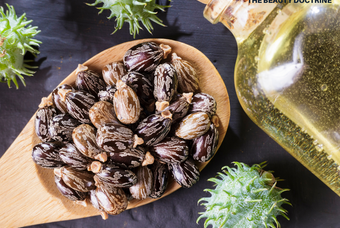
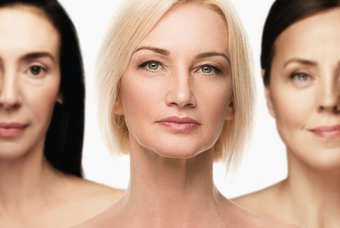

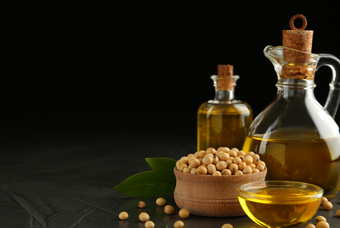
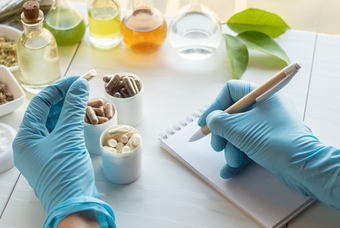
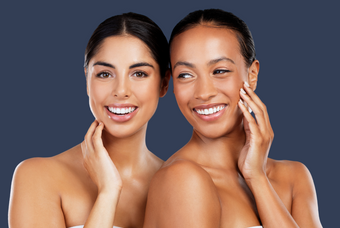
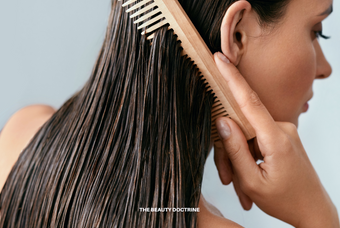
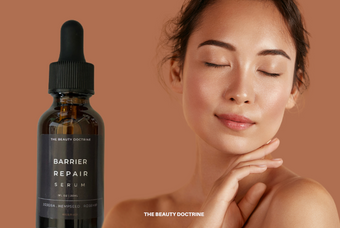
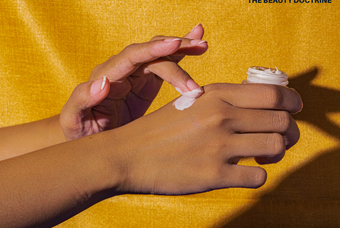



0 comments. Write a comment